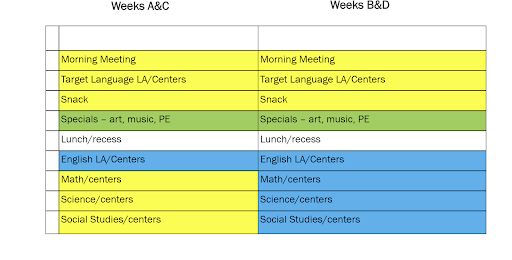Elementary
Elementary
We are able to accept students for entry in the elementary years without prior background in the language. Students are able to successfully transition to an immersion program with supplemental support.
Language Arts
During these early years, we use the Fundations® curriculum, which is a multisensory, structured phonics-based, language arts instruction program. We also teach a literacy program that is aligned to the Common Core Standards balancing work in narrative, informational and persuasive texts. Students develop explicit skills in reading comprehension, word analysis, and writing mechanics.
Language arts in the target language mirrors the standards and skills taught in English. Mandarin curricula include “Better Immersion” and “Level Chinese,” and Spanish curricula include “Senderos” and “Level Learning” as resources to develop units that support critical thinking and analytical skills development. All skills, including listening, speaking, reading and writing. are developed in the target language.
Mathematics
At HWIS, students are challenged to understand the “why” and “how” of number manipulation in addition to learning procedures and computations when problem-solving. Frequent group work allows students to understand the importance of discourse, collaboration, and diverse methods of solving problems.
Science
Social Studies
Physical Education
Arts
Elementary students work on projects that delve into aspects of global culture, studying the work of artists around the world while integrating the study of art techniques. Recently, students explored the work of Chinese artist Ai Weiwei. Fred Sandback was our inspiration for a study online. Across all grade levels, the arts play a crucial role in our educational model and figure significantly into our interdisciplinary curriculum. For every project they undertake, students begin with their own concept and are encouraged to gradually reveal it through a series of drafts.
In the Elementary music program, students learn to express themselves through weekly musical experiences designed to enkindle an intrinsic motivation for music. Beginning in Grade 2, all students learn to play the guitar.


